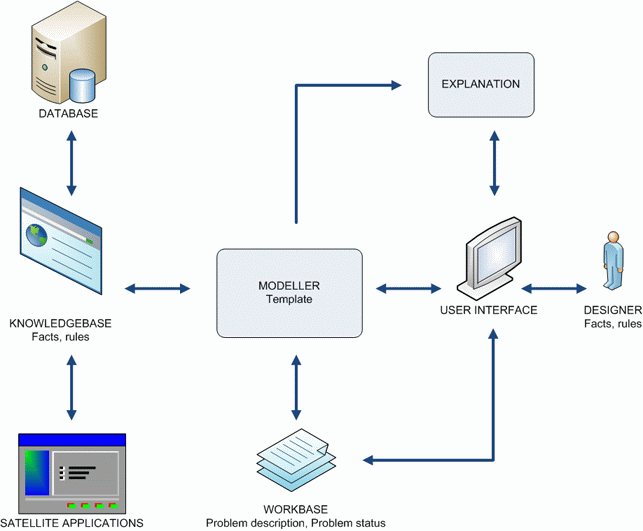The classic knowledge based applications are mainly focussed on getting the most out of existing knowledge and individual software programs. It is closest to the fundaments of Quaestor in which the Knowledge Engineer fills the knowledge base with a lot of "nuts & bolts" (ofcourse with smart constraints etc.) and the user builds a model on the basis of these "nuts & bolts" by using the modeler of Quaestor. Through input, choices and sometimes rejection of relations, together with the reasoning mechanism of Quaestor, the user comes to a solution which contains both end results and the model with intermediate results it is based on.
Quaestor network of parameters, relations and contraints
For a Domain Expert who is totally familiar with his/her field of expertise and has sufficient understanding of Quaestor, it is the most flexible and powerful way for using all the existing knowledge in a knowledge base. For End Users, macro's can be created (previous created solutions, which are then indicated as macro) avoiding complex reasoning processes and providing a reusable model which you can start with alternative input. Within this model, Quaestor will still check the validity of the model (through its constraints, etc.) and, where possible, will change the model accordingly.
Quaestor schematic architecture
The difference with Scenario based applications and Taxonomy or model/process configuration based applications is that in the classic approach the reasoning process determines the order in which relations and programs are used, and therefore the order in which questions are asked to the user. Although this in itself is very powerful, throughout the years we have learned that control on the process order, without losing the power of the modeler, is sometimes required to make advanced applications accessible for inexperienced and non-specialist users. This can only partly be solved through macro's and therefore, over the last two years better solutions where developed like the Scenario and Taxonomy concept.
Very powerful applications can be made on the basis of the classic approach. Examples are the propeller design suite KOAS of [Van Voorden Gieterij] in which some of the external hydrodynamic programs are used iteratively to find a balanced propeller design, or MVR of MARIN that uses the existing resistance and propulsion analysis tools together with MS Excel and Word to streamline the analysis and reporting process.
For more about the examples go to Classic examples.
To start with your own application, download Quaestor on [Download area of Qnowledge] and do the tutorials. With the demo/reader version you are able to develop knowledge bases up to 100 frames.

